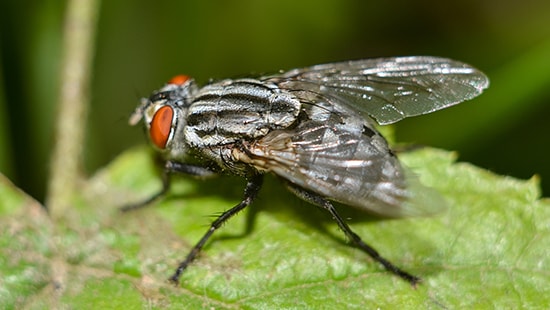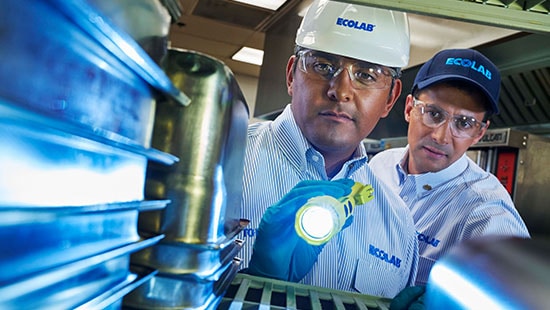Facts About Large Flies (House Flies)

Large flies go by many names: Filth flies, houseflies, bottle/blow flies and flesh flies. These flies are drawn to food and can transmit at least 65 diseases to humans, making them particularly threatening for restaurants and food retail.
Large flies are a hazard to your business, and understanding their behavior can help with fly control in your facility. Ecolab’s commercial fly programme has helped thousands of customers get rid of flies and protect their brand.
Fly Biology and Risk
What you're up against when your restaurant or business has a fly problem:
- A female fly can lay up to 500 eggs in her lifetime.
- The common housefly carries more than 200 different pathogens and can carry 1.9 million bacteria on its body.
- Environments with temperatures above 70°F/21ºC (such as a restaurant kitchen) cause rapid decomposition of vegetation and other organic matter, providing ample food for flies and larvae.
- House flies will often regurgitate and excrete on the surfaces they land, potentially transmitting at least 65 diseases to humans. This includes E. coli, typhoid fever, dysentery, cholera, tuberculosis and Salmonella.
- Large flies are persistent in their search: they can travel a mile or more to find suitable food and breeding material.
Common Large Flies

House Fly
- Adult is 4 - 7.5 mm long, dull gray in colour and has four black longitudinal stripes on its thorax.
- The most common of the large flies and can harbor more than 200 different pathogens.
- They lay their eggs on warm, moist, decaying organic material.
- Main breeding sites include bin areas, rubbish and decaying vegetation, where bacteria and other microorganisms thrive.

Flesh Fly
- Adult is 6 - 11 mm long and dull blackish gray in colour, with reddish eyes and three black longitudinal stripes on its thorax.
- Named for the way its larvae develop in decaying flesh and spoiling meat.
- Many species in this group do not lay eggs, rather the female flies deposit live larvae on or near the breeding source.
- Main breeding sites include moist debris found in food equipment, rubbish/bin areas, and drains.

Blow/Bottle Fly
- Adult is 4 - 16 mm long and metallic blue, green, brassy or black in colour.
- Blow flies are persistent flyers and can travel long distances in search of food and egg-laying sites.
- Seen near meat processing plants and slaughterhouses. Although these flies lay eggs on many types of decaying organic matter, they prefer meat or dead animals.
- Can carry diseases, which are mechanically transferred via external body surfaces.
Large Flies and Food Safety
Large flies are also called filth flies because they breed in filth such as manure, human excrement, dumpsters, garbage and decaying vegetation. They cause major food safety risks and are a threat to a restaurant's reputation.
Ecolab's Outside-In Approach to Fly Control
What's our outside-in approach? Identify and reduce fly pressure from the outside and eliminate any flies that may reach the inside. Our entomologists developed this programme to help you eliminate and prevent flies, meet health department standards, and provide a clean, safe, and healthy environment for customers and employees in your restaurant or facility.



